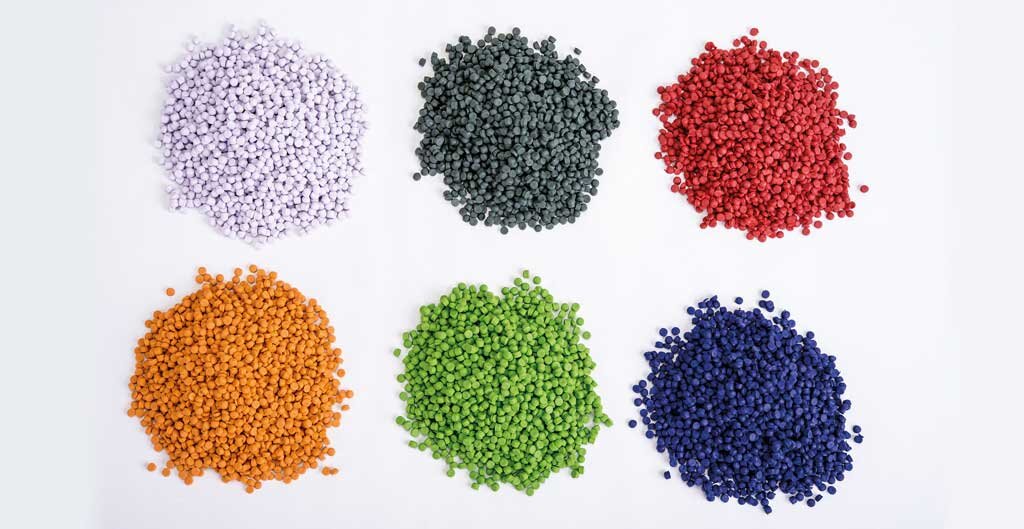


Within the supplies for manufacturing soles and finished footwear, the EVA copolymer -Ethyl-Vinyl-Acetate- has grown in use due to the advances made in the formulations and processing technology.
At the beginning, the best known products of this component were EVA sheets, manufactured by molding and compression, widely used by cutting in the footwear industry, especially in flip flops and sole construction.
It was followed by EVA injection that allowed the manufacture of different types of articles and components, with differentiated characteristics according to the various formulations available.
Perhaps the lower weight and greater flexibility of EVA products are the most competitive factors compared to other alternatives.
In response to the growth of the EVA injection systems in the footwear industry, and in particular the preparation of the formulations of these compounds, we interviewed Mariano Baqué, manager of KB-GOM of Argentina, producer and supplier of these supplies, which informed us about their characteristics, uses and performance.
“Our company is prepared to produce different formulations of EVA in lumps for injection, according to the requirements of each manufacturer. Formulas are modified and elaborated according to the characteristics of each product. If the request is to increase its properties we can add rubber, and if the need is to lower them we incorporate polyethylene. Everything is related to the product to be manufactured”.
“The base supply of EVA can be mixed with a silica load that considerably increases the quality of the material, followed in order of performance, precipitated carbonate and natural carbonate. Depending on the requirements will be the costs of the formulas. There is a great price variation that is directly related to the type of supply used".
"It is important to clarify that the use of EVA for injection has been extended to articles as diverse as soles, shoes, seats, wheels, handbags, technical parts, etc."
“Our plant currently has a productive capacity of 400 kgrs/hour, although with the recent acquisition of a new line, at the end of the year we will reach 1,000 kgrs/hour. The decision was made based on the growth of this technology, and in particular, based on the purchase of EVA injectors, that have been made by Argentine and regional factories that will be operational by the end of the year. We believe that there will be an important demand for these products and we want to participate in the offer, complemented by our technical and advisory services”.
“The process for EVA injection requires a tight coordination of temperatures throughout its mechanism so that the material is finished melting, curing and solidifying within the matrix. When it enters the injection screw, four resistors generate four different temperatures of 70º, 75º, 80º and 90ºC before they arrive at the matrix. The pouring spout introduces the material into the matrix or mold that is at an approximate temperature of 175 ° C, and there it solidifies and begins the chemical reaction that produces the expansion”.
“At the opening of molds, the injected sole expands, according to the formulation of the compound, and immediately begins to contract. To achieve its dimensional stability, the sole is placed on a last pattern that sets the final and stable measurements at room temperature”.










“It is essential, once the product is planned, to define its degree of expansion with respect to the characteristics of hardness, flexibility and required performance. For this, the compound supplier must prepare the appropriate formulation. In general, for a sole with heel and volume the expansion should be 1.4, for a common sole 1.5 (running type) and for a flip flop or shoe 1.6, which represents approximately 40, 50 and 60% expansion. Such characteristics must be informed to the matrices manufacturer because depending on the expansion and hardness degree of the products will be the size of them.”
“EVA matrices are constructed in aluminum and their manufacture is similar to those of thermoplastics, only since they are different processes - that of EVA is by expansion - measurements of the EVA matrices must be calculated with accuracy, since depending on the expansion degree, the final product changes its dimensions, textures and drawings”.
“EVA components currently have no problems with glued. Only the initial application of a ‘primer’ is necessary and then each adhesive supplier will offer the right solution”.
“To EVA soles different types of welts and accessories can be applied -cold- using the corresponding adhesives. It is also possible to make different systems of finishes and effects, such as paintings, engravings and finishes”.
“Taking the current average market prices, EVA compounds have a higher cost per kilo compared to PVC, but they are somewhat lower than the TR, their performance being higher. If we calculate that with a kilo of PVC (US $ 2.30) two pairs of soles can be produced and with a kilo of EVA (US $ 4.30) four pairs, the final value of the pair is more economical or similar. And it is more convenient, considering that it is a product with superior characteristics”.
Although he acknowledges that most of the EVA injectors for soles in operation in the international market are for single-color products, Mariano Baqué gave his opinion regarding the next step of this technology, which has not yet become widespread.
“These are the EVA injectors for bi-color soles, whose production system is different from the single color equipments. While these work by injection, the two-color machines work by dump or spill. Thus, the two colors melt simultaneously by separated in each matrix, so that once processed, they are immediately joined by pressure, where the curing and cooking process culminates. Although it is basically a press, the most important element in the operation is the special set of matrices - similar to those of rubber - with an internal separator between the two colors that, at the moment of joining, moves quickly”.
"We know that this mold system is not yet very developed, even in China and Brazil, which is why many industries import them from Taiwan."
"Finally, the two-color products obtained through this process offer greater aesthetic and technical possibilities."
Data sheet
Description
EVA copolymer for injection. Excellent processability and performance for the manufacture of soles, and finished footwear.
General Properties
Very good mechanical properties, lightness, damping, flexibility, durability and resistance to hydrolysis. Suitable for all types of lightweight and comfort footwear.
Mode of Use
Compound for injection and dump. It is used in applications where flexibility and elasticity characteristics are required, in conditions of moderate temperature and deformation.
Applications
Soles, insole, sandals, shoes, sneakers, wheeled vehicles, etc.
Process Conditions
Screw temperature 80º/85º C
Mold temperature 160º/180º C
Curing time 350/400 sec.
Expansion 40%/50%/60% (by choice)
Hardness 40/45 shores A
